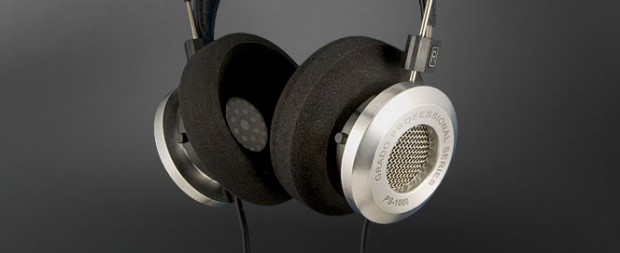Grado is one of America's oldest hi-fi companies. In the 1950s it manufactured phono cartridges, turntables, and speakers. While Grado still makes a full line of highly regarded cartridges (budget-priced all the way up to high-end models), it's perhaps better known today for its headphones, which spring from the professional line it began manufacturing in the 1980s. The company now offers a complete line of headphones ranging from the $49 iGrado to the $1,695 flagship we're reviewing here, the Professional Series 1000 (PS1000). It still has the retro/industrial styling Grado's famous for, but we think it's the best-looking and best-sounding headphone we've tested from the company. That also makes it one of the best pair of headphones we've ever heard.
Design and features
All of Grado's high-end headphones ($495 and above) have featured either wood or machined metal earcups, but the PS1000s use a combination wood-metal earcup. The headphones' drivers are bonded, without any metal fasteners, to a mahogany mounting piece that is in turn bonded to a solid, round metal earcup. The wood-metal design approach is unusual, but it seems to produce a more natural sound than previous Grado headphones. The PS1000s' earcups certainly feel remarkably solid and inert, desirable qualities for speaker cabinets and apparently for headphones.
The PS1000s' drivers don't look much different than the ones we've seen on other high-end Grados, but Grado claims they are unique to the PS1000s. They're open-back headphones, so you can easily hear external sound around you. (Since the PS1000s are intended for home use, we don't consider that to be an issue.)
The 5-foot, eight-conductor cable is a little thicker and more flexible than what we've seen from Grado before. It's Y-shaped (with cords going to each ear), and terminated with a gold-plated, 6.3-millimeter phono plug. The PS1000s also come with a 15-foot extension cable and a 6.3-millimeter to 3.5-millimeter (minijack) cable adapter. The adapter is a bit bulky but works well enough; we used it when we listened to the PS1000s with our iPod.
Performance
 Before we get into the PS1000s', sound we'd like to point out that Grado headphones, from the affordable SR80i up through the line, share a "house" sound. Grados sound like Grados: they are all exciting, extremely dynamic performers, and while the PS1000s share those qualities, they're more refined, sweeter, and with a more sophisticated design.
Before we get into the PS1000s', sound we'd like to point out that Grado headphones, from the affordable SR80i up through the line, share a "house" sound. Grados sound like Grados: they are all exciting, extremely dynamic performers, and while the PS1000s share those qualities, they're more refined, sweeter, and with a more sophisticated design. Since the PS1000s are made in Brooklyn, we decided to start our listening sessions with a Brooklyn band, Oakley Hall. The group's "I'll Follow You" CD sounded great, with the sort of full-bodied dynamic swing you rarely hear from contemporary rock CDs. Patrick Sullivan and Rachel Cox's twin lead vocals were natural and clear.
Switching back and forth between RS-1i and PS1000, the difference can be summed up with one word: scale. The RS-1i is still great, but it's more closed-in, more "inside the head" sounding. Stereo imaging is much wider over the PS1000, but it's also more spacious. The RS-1i is dimensionally flatter, and then there's the bass. Yes, with the PS1000 there's more of it, but the quality, depth, and palpable bass texture come through like never before. Listening to any decent-sounding acoustic jazz CD, we were much more aware of the bass player's contributions.
The treble is likewise better resolved and clear. Cymbals sizzle more and they have greater presence through the PS1000s. But rather than try to describe different frequency ranges, it's the entirety of the sound that's a huge advance over what we've heard before from Grado.
DVDs and Blu-rays sounded pretty terrific over the PS1000s. Listening over our Onkyo TX-SR805 receiver, the circle of drums scene from the "House of Flying Daggers" DVD had tremendous impact and the sound of each drum thwack was clearly defined. It was undoubtedly better than Sennheiser's flagship HD 800 headphones in that regard. To hear this level of detail over speakers you'd need to spend at least five times the cost of the PS1000s.
The PS1000s may not be the best headphones on every count--the Sennheiser HD 800s are more comfortable and offer a sound that's arguably a tad more "accurate"--but they're definitely the best Grado headphones ever made.
The good: Grado's most comfortable over-the-ear headphones sound great at home and with iPods; beautifully crafted wood and solid metal earcups; stellar build quality; includes 15-foot extension cable and phono-to-miniplug adapter.
The bad: Extremely expensive; doesn't include travel bag or storage case.
The bottom line: They may cost as much as a big-screen TV, but the PS1000s are simply the best-sounding, most comfortable, and best-looking Grado headphones




0 comments:
Post a Comment